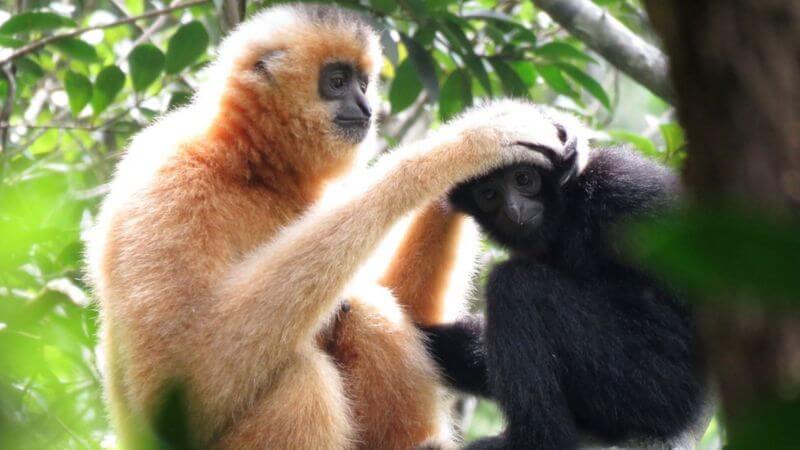

Conservation: Bridge of hope for world's rarest primate
 Advanced
Advanced
2020/10/27 13:21
1. roam (v)
to move about or travel, especially without a clear idea of what you are going to do
2. species (n)
a set of animals or plants in which the members have similar characteristics to each other and can breed with each other
3. foraging (v)
to go from place to place searching for things that you can eat or use
4. extinction (n)
a situation in which something no longer exists
5. conservation (n)
the protection of plants and animals, natural areas, and interesting and important structures and buildings, especially from the damaging effects of human activity
6. poaching (v)
to cook something such as a fish, or an egg with its shell removed, by putting it in gently boiling water or other liquid
7. canopy (n)
to notice something that is partly hidden or not clear, or to discover something, especially using a special method
Conservation: Bridge of hope for world's rarest primate

Swinging through the treetops comes naturally for gibbons. But that’s tricky if a landslide has torn a huge gap in the forest, making it difficult to roam far and wide, to find food or meet a date.
For the rarest primate in the world, there’s now a temporary solution: a rope bridge reconnecting the trees. Some used the ropes as a handrail, others swung by their arms and the most daring walked the tightrope.
The primate lives only in the forests of China’s Hainan island.
A small number of primates, including the orangutan, have been seen to use artificial rope bridges. But this is the first time the Hainan Gibbon has learnt the ropes.
Dr Bosco Chan says the rope bridge should help boost numbers as part of various conservation efforts. Reforestation should be the priority in preventing extinction of the species, he added. “We need to make sure we control poaching effectively, expand lowland forest which is the optimal habitat for gibbons, and keep monitoring the gibbon groups to predict and prevent any threats. “
Within their habitat, they travel above ground from tree to tree. Gaps in the canopy, both natural and man-made, can tie them to a specific area, interfering with foraging and breeding, and increasing the risk of predation.
Nearly 20 gibbon species exist throughout the world, from northeastern India to Borneo. Most are under threat from the destruction of forests, hunting and illegal trade.Two species of gibbon have recently disappeared in China and all surviving Chinese species, including the Hainan Gibbon (Nomascus hainanus), are classified as Critically Endangered by the International Union for the Conservation of Nature.

What are your thoughts on endangered species?
Which animal would you most like to protect and why?
What should the world do to stop the trade in endangered animals?
“Much of human behavior can be explained by watching the wild beasts around us. They are constantly teaching us things about ourselves and the way of the universe, but most people are too blind to watch and listen.”
Suzy Kassem


